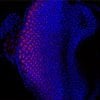Summary: Levodopa, a drug typically prescribed for the cure of Parkinson’s illness that raises dopamine in the brain was discovered to reverse the consequences of neuroinflammation on the reward program and enhance indications affiliated with depression.
Resource: Emory College
An Emory College review printed in Molecular Psychiatry shows levodopa, a drug that boosts dopamine in the brain, has possible to reverse the outcomes of irritation on brain reward circuitry, eventually bettering signs and symptoms of depression.
Several labs across the entire world have shown that inflammation causes lessened drive and anhedonia, a core symptom of depression, by impacting the brain’s reward pathways.
Earlier investigation conducted by the Department of Psychiatry and Behavioral Sciences at Emory College University of Drugs has connected the results of inflammation on the brain to lowered launch of dopamine, a chemical neurotransmitter that regulates drive and motor exercise, in the ventral striatum.
In the review, researchers shown that levodopa reversed the outcomes of irritation on the brain’s useful connectivity in reward circuitry and anhedonia (incapacity to sense enjoyment) in depressed men and women with better C-reactive protein (CRP), a blood biomarker developed and unveiled by the liver in response to swelling.
Concentrations of inflammation can be effortlessly calculated by uncomplicated blood checks, like CRP, quickly readily available in clinics and hospitals throughout the U.S.
The review included 40 depressed clients with a selection of CRP stages from large to low who underwent functional brain scans on two visits soon after receiving in random get both placebo or levodopa, a drug usually recommended for issues like Parkinson’s sickness.
Levodopa enhanced practical connectivity in a classic ventral striatum to ventromedial prefrontal cortex reward circuit but only in individuals with increased stages of CRP. This advancement in reward circuitry in frustrated people today with bigger CRP also correlated with minimized indications of anhedonia right after levodopa.
“This exploration demonstrates the translational probable for use of inflammation-similar deficits in practical connectivity and could have vital implications for the potential investigations of precision therapies for psychiatric patients with large irritation,” states principal investigator and senior author Jennifer C. Felger, Ph.D., affiliate professor of psychiatry and behavioral sciences, Emory School of Medication.
Felger claims the research results are significant for two causes. To start with, they counsel depressed sufferers with substantial irritation may well precisely answer to prescription drugs that boost dopamine.
2nd, Felger suggests these conclusions also present additional evidence that practical connectivity in reward circuitry may possibly serve as a responsible brain biomarker for the effects of swelling on the brain.
“Moreover, as the influence of levodopa was precise to frustrated people with greater inflammation, this functional connectivity may be utilised to assess the responsiveness of the brain to novel remedies that could be targeted to this subtype of depressed individuals in foreseeable future research and clinical trials,” suggests Felger.
About this psychopharmacology and depression research news
Author: Jennifer Johnson McEwen
Supply: Emory University
Get hold of: Jennifer Johnson McEwen – Emory University
Image: The picture is in the community domain
Original Investigation: Open entry.
“Practical connectivity in reward circuitry and signs of anhedonia as therapeutic targets in depression with substantial irritation: evidence from a dopamine challenge study” by Mandakh Bekhbat et al. Molecular Psychiatry
Abstract
Purposeful connectivity in reward circuitry and signs or symptoms of anhedonia as therapeutic targets in depression with higher swelling: proof from a dopamine obstacle research
Improved irritation in key depressive disorder (MDD) has been associated with minimal useful connectivity (FC) in corticostriatal reward circuits and signs and symptoms of anhedonia, interactions which may possibly entail the influence of swelling on synthesis and launch of dopamine.
To take a look at this speculation even though establishing a system to look at focus on engagement of potential therapies in individuals with amplified swelling, medically stable unmedicated grownup MDD outpatients enrolled to have a selection of swelling (as indexed by plasma C-reactive protein [CRP] levels) ended up studied at two visits involving acute challenge with the dopamine precursor levodopa (L-DOPA 250 mg) and placebo (double-blind, randomized order ~1-week apart).
The primary outcome of resting-point out (rs)FC in a basic ventral striatum to ventromedial prefrontal cortex reward circuit was calculated making use of a targeted, a priori strategy.
Facts available both pre- and submit-obstacle (n = 31/40) proven security of rsFC throughout visits and determined CRP > 2 mg/L as a minimize-level for patients exhibiting optimistic FC responses (submit minus pre) to L-DOPA as opposed to placebo (p < 0.01).
Higher post-L-DOPA FC in patients with CRP > 2 mg/L was verified in all sufferers (n = 40) the place rsFC facts had been accessible write-up-obstacle (B = 0.15, p = 0.006), and in people with task-based mostly (tb)FC for the duration of reward anticipation (B = 0.15, p = 0.013).
Whilst effort-dependent inspiration exterior the scanner positively correlated with rsFC independent of treatment or CRP, modify in anhedonia scores negatively correlated with rsFC after L-DOPA only in patients with CRP > 2 mg/L (r = -.56, p = 0.012).
FC in reward circuitry should be further validated in larger sized samples as a biomarker of focus on engagement for potential treatment plans together with dopaminergic agents in MDD people with amplified inflammation.












